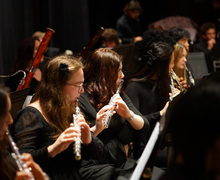Q&A: Professor discusses automobile lecture, exhibit
Syracuse University Libraries will open its new spring 2015 exhibit “The Automobile: Design Considerations and Local Manifestations” Tuesday. The exhibit, which explores how the automobile developed in Syracuse and different automobile designers, will run until Aug. 28 on the sixth floor of E.S. Bird Library in the Special Collections Research Center Gallery. The air-cooled Franklin car is a highlight of the exhibit, as well as cartoons, original designs and hundreds of photographs of cars.
Dr. Kevin Borg, an associate professor of history at James Madison University, will host a lecture, “A Social History of Your Car’s ‘Check Engine’ Light” on Jan. 22. The Daily Orange spoke with Borg about his experience with automobiles and what visitors can expect when attending the exhibit and his lecture.
The Daily Orange: How long have you been studying automobiles?
Kevin Borg: I’ve been studying automobiles academically for at least a decade. I grew up in the automobile generation — my dad owned a tire store. When I was younger I always tinkered with my own cars. I’ve been aware of cars since I’ve been aware of anything.
The D.O.: When did you first find that you were interested in learning about automobiles?
K.B.: There is a completely overlooked angle in the automobile industry. My interest came in my dissertation at the University of Delaware. I looked into where did the mechanic come from — from the horse drawn carriage to the motor. That became my first chapter.
The D.O.: Can you give a little preview of your lecture?
K.B.: I’ll lead a mini seminar about the check engine light and how complicated its political and social history is. I’ll talk about how did we get that in our dashboard and why is it so frustrating. I’ve also been using geospatial history and taking historical maps to make them fit the coordinates of mapping programs like Google Earth.
The D.O.: What do these maps tell us?
K.B.: You can compare the historical terrain with the contemporary terrain. Syracuse has maps of the city from the late 1800s to the 1960s. It’s eye opening to community members to look at years and years of map overlays and to practice seeing places. It’s a hands-on way to bring a verging field of spatial history to practical use.
The D.O.: Why should students and faculty attend the lecture?
K.B.: I think students might find it interesting. What I hope to be able to show is that there is much to be gained by crossing interdisciplinary paths on campus. People will have a deeper understanding of the community.
The D.O.: Can you tell us about the exhibit?
K.B.: One of the cool things is the automobile design. There will be top notch designers on display and original papers from a Syracuse car manufacture. The original use and car manual for owners and their cars will be shown with original maps as well as high design and an elite approach to automobiles.
The D.O.: How did Syracuse play a role in the history of automobiles?
K.B. For the first 40 years, manufacturers were dispersed in many cities. Syracuse had a luxury car manufacturer — Franklin — and an urban person who had a higher sense of style. Syracuse manufacturers were above a Model T and were not Ford, but were still significant. Syracuse also became motorized and began paving roads. Anybody looking at any city from the late 1800s to the early 1920s or 1930s could see that it is a period of rapid change.
Published on January 20, 2015 at 12:01 am
Contact Jackie: jmfrere@syr.edu | @jackie_frere





